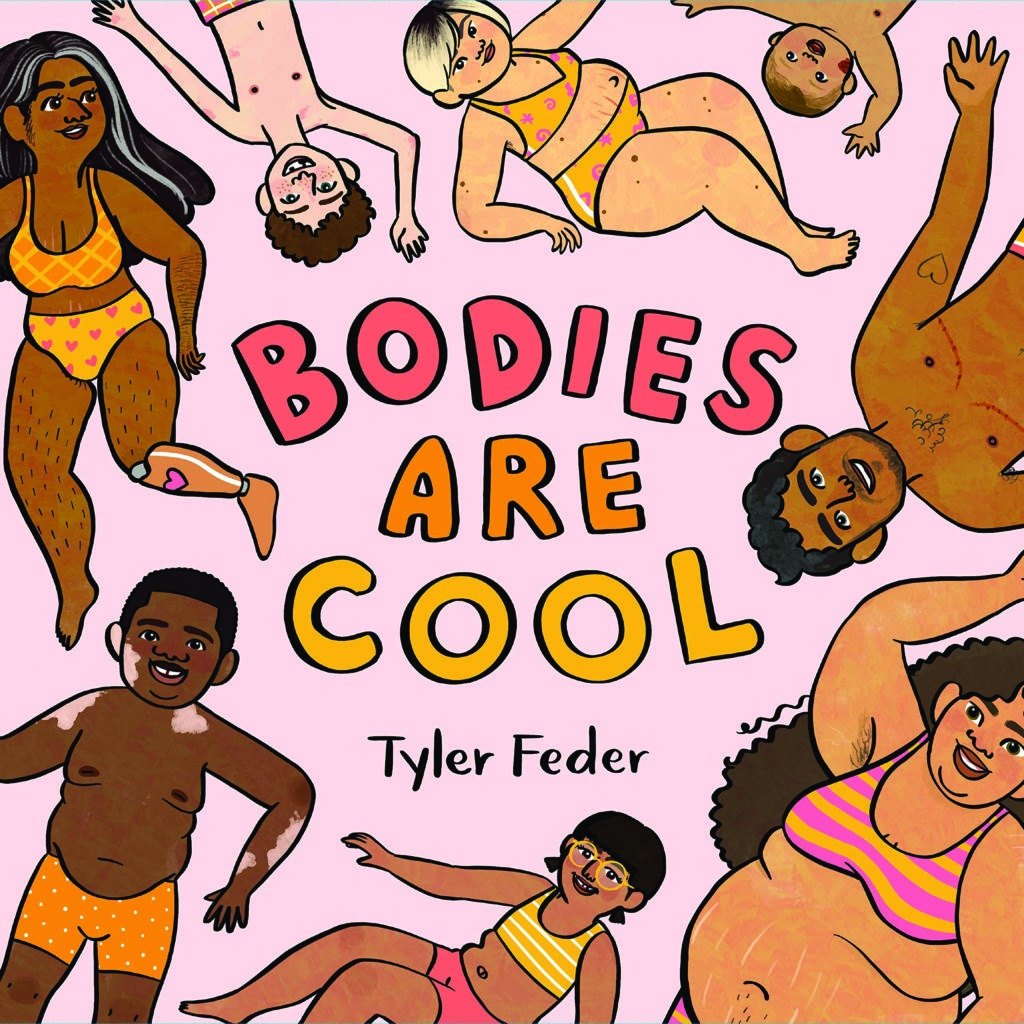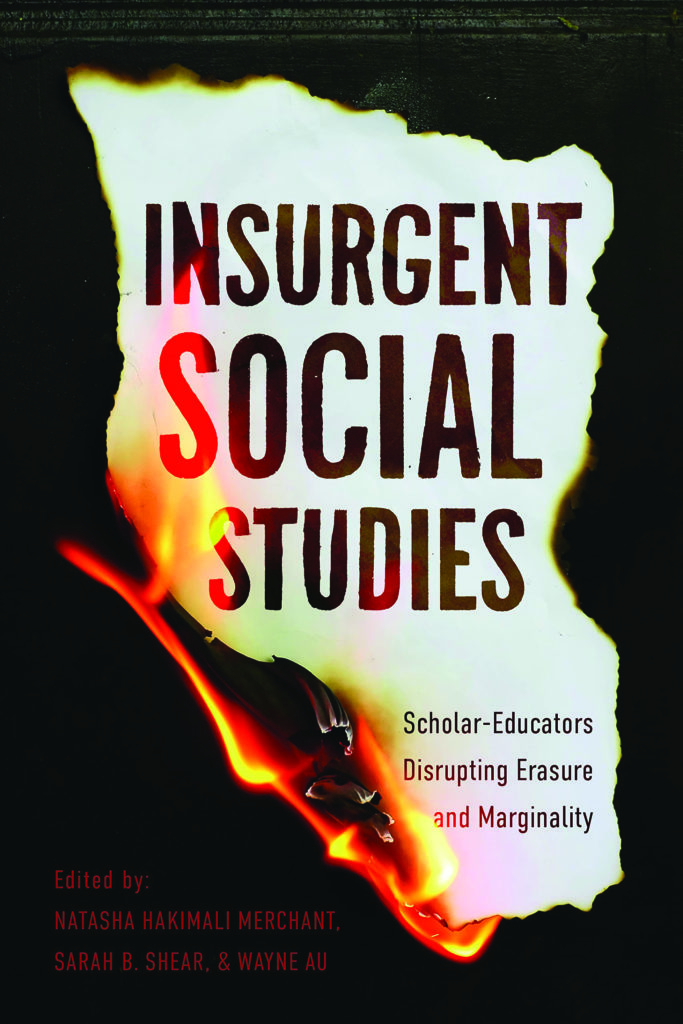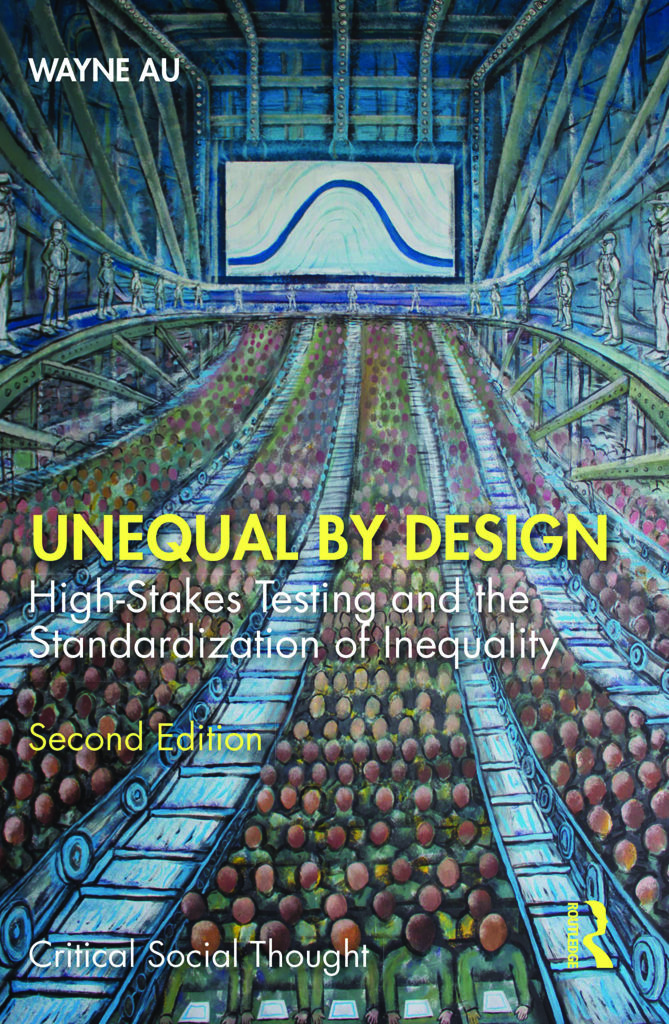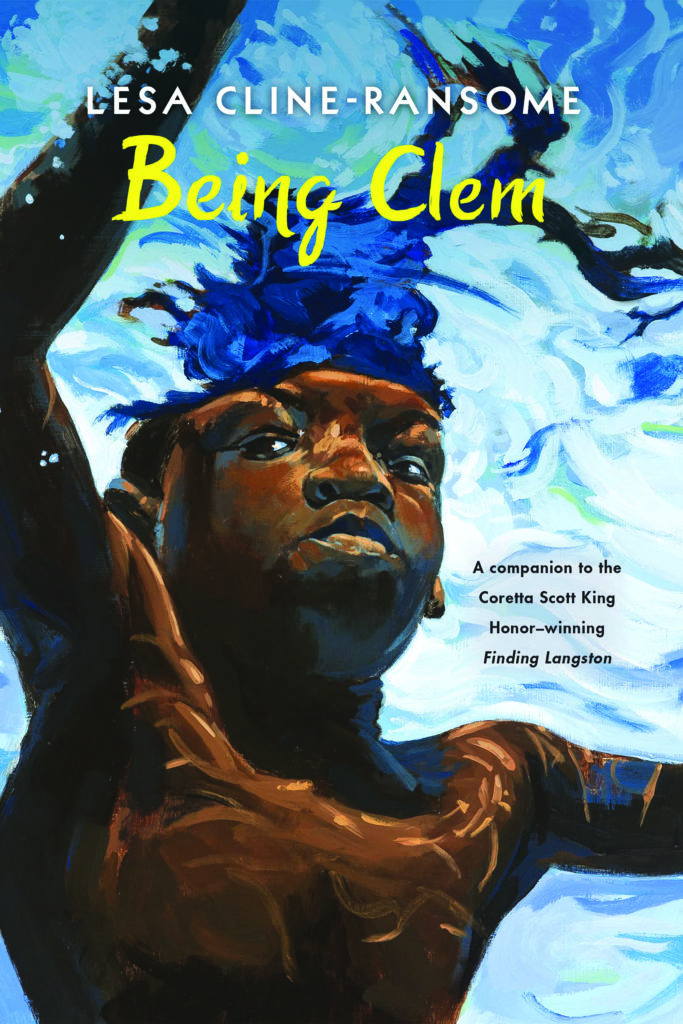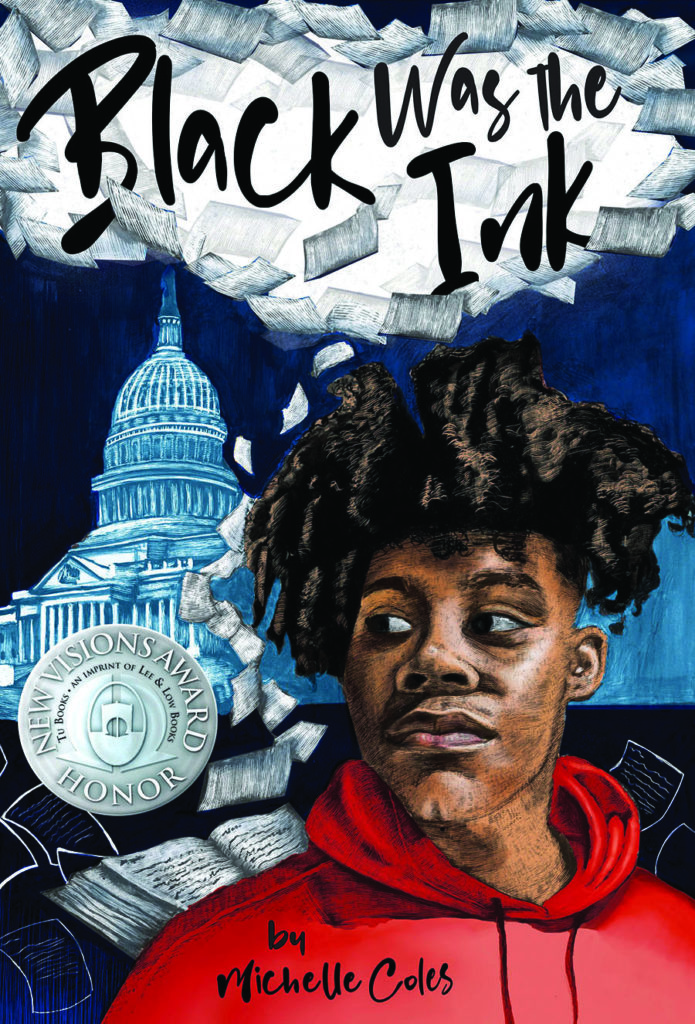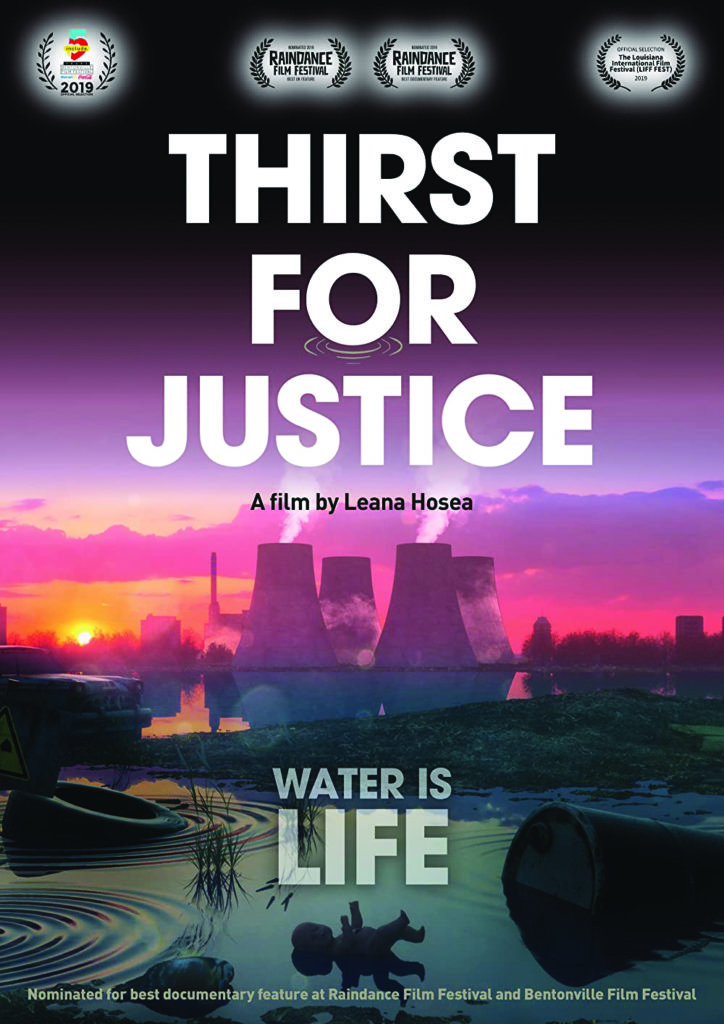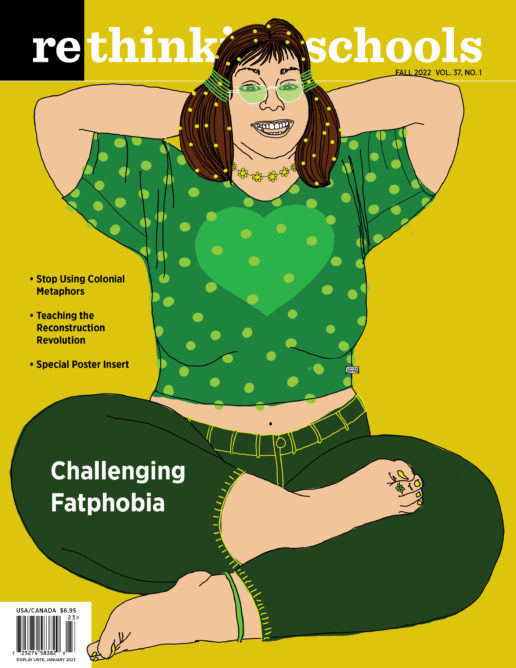Our picks for books, videos, websites, and other social justice resources 37.1






Picture Books
Bodies Are Cool
By Tyler Feder
(Rocky Pond Books, 2021)
32 pp.
Leg hair, armpit hair,
fuzzy-lip-and-chin hair,
brows-meet-in-the-middle hair.
Bodies are cool!
Simple verse and exuberant images carry readers through this joyful celebration of bodies. From splotchy skin, breathing tubes, and birthmarks to bold scars, saggy tummies, and thick legs, Feder shows a variety of body types, skin colors, disabilities, and body features. An obvious powerful read aloud for preschool and early elementary classrooms, the illustrations could also be used to spark conversations about media stereotypes, fat justice, inclusion, and disability justice with older students.
Policy
Insurgent Social Studies: Scholar Educators Disrupting Erasure and Marginality
Edited by Natasha Hakimali Merchant, Sarah B. Shear, & Wayne Au
(Myers Education Press, 2022)
228 pp.
In the introduction to Insurgent Social Studies, the editors’ opening line is “Social studies education in the United States is a problem.” The problem is that the field of social studies has historically been dominated by white men, and this book serves as an intervention to that problem. Chapters in this collection offer perspectives and analyses of social studies from a variety of groups that have typically been marginalized, including the need for anticolonial social studies, Black Lives Matter in the social studies, the necessity of teaching about Palestine as part of social studies curriculum, challenging whiteness in social studies education, and queering world history, among others. This is an important collection for learning about social studies research and practices that are not typically included in the field.
Unequal by Design: High-Stakes Testing and the Standardization of Inequality
(Revised 2nd Edition)
By Wayne Au
(Routledge, 2023)
145 pp.
In this second edition of Unequal by Design, longtime Rethinking Schools editor Wayne Au offers a searing, research-based critique of high-stakes testing in the United States. With a new foreword from the author and several new or completely rewritten chapters, the second edition of Unequal by Design examines the rise of high-stakes testing over the last 100+ years, their central role in corporate education reform, how they’ve been used as a tool for white supremacy, and how the body of empirical research points to the ineffectiveness of these tests to measure teaching and learning. The new conclusion, “Reclaiming Assessment for Justice,” highlights how communities of color have resisted high-stakes testing for decades and discusses how we can think about and do assessments differently. If you want to understand the tyranny of testing in our public schools, this is the book to read.
Novels
Being Clem
By Lesa Cline-Ransome
(Holiday House, 2021)
248 pp.
The third book in a must-read middle-school trilogy of historical fiction, Being Clem is set in World War II-era Chicago. African American protagonist Clem is 9 years old when his father dies in the Port Chicago Disaster, a munitions explosion at a seaport in California. Not only are 320 sailors (most African American) killed, but their families’ lives are also torn apart. Racism contributed to the disaster and it delayed any support for the families. Clem’s mother can barely make ends meet and Clem has to figure out how to move forward in a household filled with grief and uncertainty. Cline-Ransome introduces history that is too often left out of textbooks, such as the role of the Black press, the Great Migration, racism in the North, Black community associations, Black schools, and Black swimming pools. In each case, the examples are specific to the city with the Chicago Defender, the DuSable High School Swim Team, the Bud Billiken Parade, and much more. She layers that history with a moving story about a young boy shaping his identity. Clem is a warm and sensitive child who cries easily and gets teased at school. Through what seems like a lucky break, he becomes friends with two bullies who provide him a safety net. But he soon realizes the cost to his own values and has to figure out how to be strong without victimizing others. As in all her books, Cline-Ransome does not oversimplify the bullies; instead, she alludes to the conditions of domestic abuse that contribute to their behavior. Being Clem can help young people see how identity is influenced by racism and sexism — and how to shape a more just path forward.
Black Was the Ink
By Michelle Coles
(Lee & Low Books, 2021)
356 pp.
Set in 2015, Black Was the Ink follows the life of Malcolm Williams, a 16-year-old from Washington, D.C., forced to spend the summer with his late dad’s family in Mississippi, due to increasing violence in his neighborhood. Malcolm learns that the state is taking over the farm his family has owned for generations. He finds himself intimately connected to this farm when he discovers his great-great-grandfather Cedric’s diary. The diary leads Malcolm to travel back in time to the period of Reconstruction. Stunned by the profound changes of the post-Civil War period, Malcolm finds himself working as an aide for Black congressmen such as Hiram Revels and Robert Smalls, who are fighting for the adoption of the 14th and 15th amendments. Malcolm is trapped between the massive progress and hope in the 1860s, and the reversal of that progress just 150 years later. Although Malcolm is inspired by the changes he sees, it makes his father’s murder and his uncle’s unjust imprisonment even more confusing. Through confronting these injustices, Malcolm realizes how special his family’s land is.
Black Was the Ink gives hope through illuminating a period often misrepresented in popular media and textbooks, but also ignored. In our times, when it is easy to despair, author Michelle Coles gives hope to readers that through understanding the revolutionary strides people took in the past, change is still possible today.
Film
Thirst for Justice
Produced and directed by Leana Hosea
(Bullfrog Films, 2022)
58 min.
In this disturbing yet ultimately hopeful film, we see what happens when access to clean water is not regarded by government and corporations as a human right. Former BBC journalist Leana Hosea embarks on a journey that takes her from the Navajo Nation to Flint, Michigan, as well as to Standing Rock and the struggle against Enbridge Line Three under the Great Lakes. Hosea follows Janene Yazzie, of the Navajo Nation, who is looking into contamination of her son’s school’s water in Sanders, Arizona. Yazzie tells Hosea: “I remember getting the text and the call with the results: There’s uranium in Sanders School’s water system, at almost two times the acceptable drinking water limits. And you’re now a part of that never-ending struggle to prove that this was unjust, that our babies didn’t deserve to be poisoned. And the last thing you want to know is that you were unable to protect your babies from something that you know is extremely harmful for them.” Yazzie believes that her own ovarian cancer was caused by uranium contamination from the 1979 Church Rock dam spill. She and scientists she enlists in her research discover higher rates of radiation at abandoned mines in the Navajo Nation than are found around Chernobyl. Janene travels to Standing Rock and then to Flint, where she meets other water protector activists and connects the ways Indigenous communities and other poor and working-class communities are denied access to clean water and then attacked when they organize to demand their rights. The film chronicles crimes against humanity, but also features a rainbow of imaginative, tenacious activists, who will inspire our students. As the thirst for profit collides with the thirst for justice, water should play a central role in our curricula. This film is a valuable classroom resource as we develop “Water Is Life” lessons.
Reviewed by Bill Bigelow, Elizabeth Barbian, Deborah Menkart, and May Kotsen

